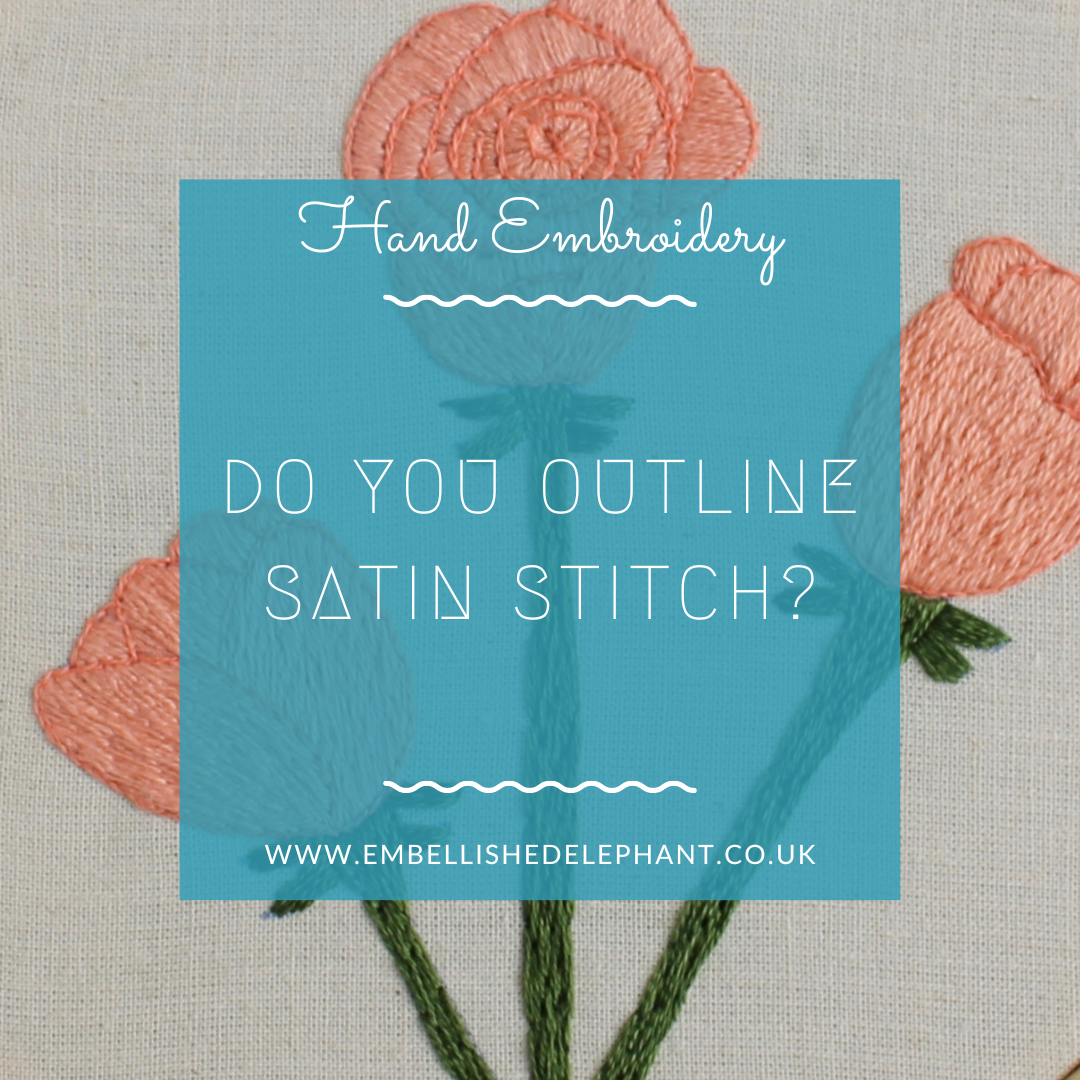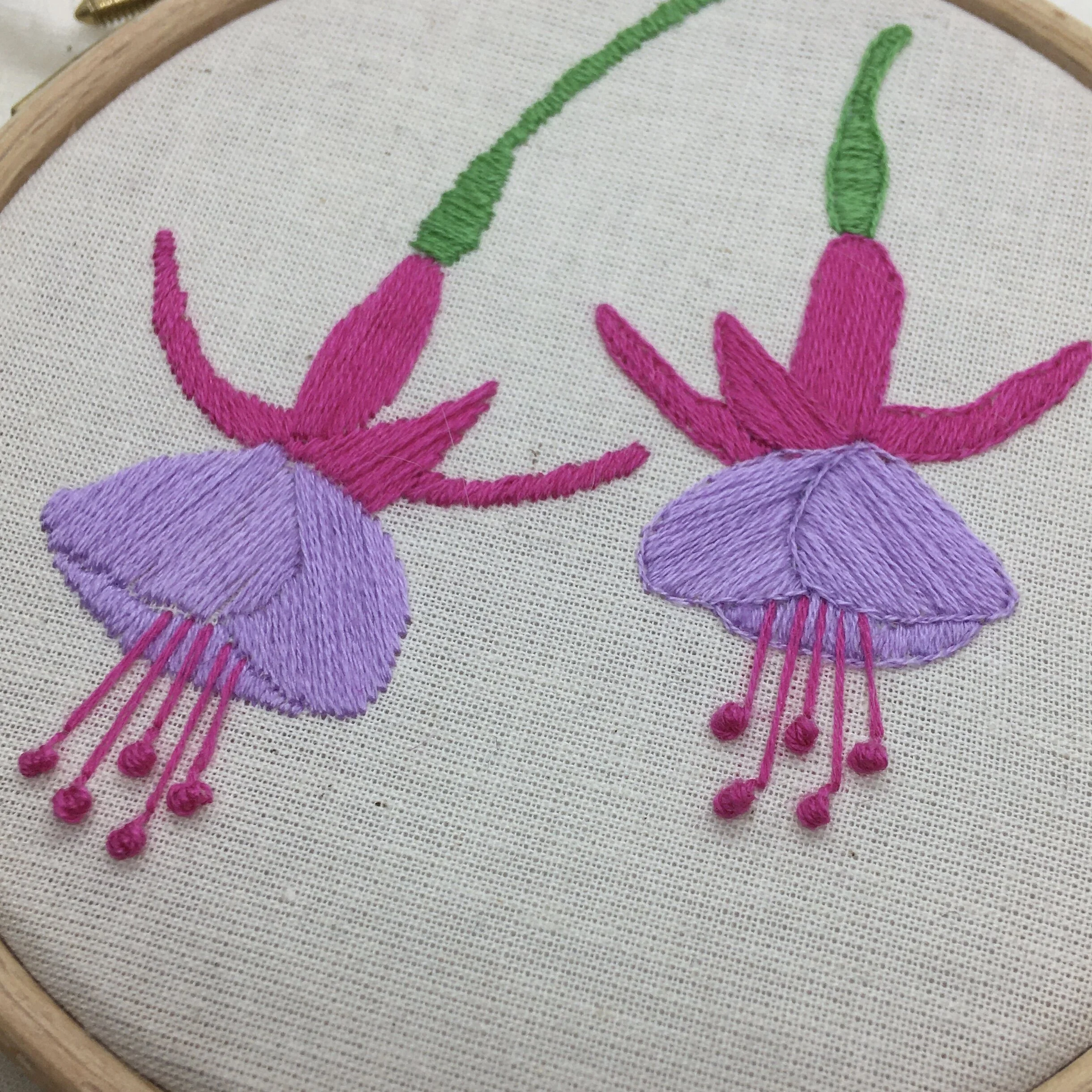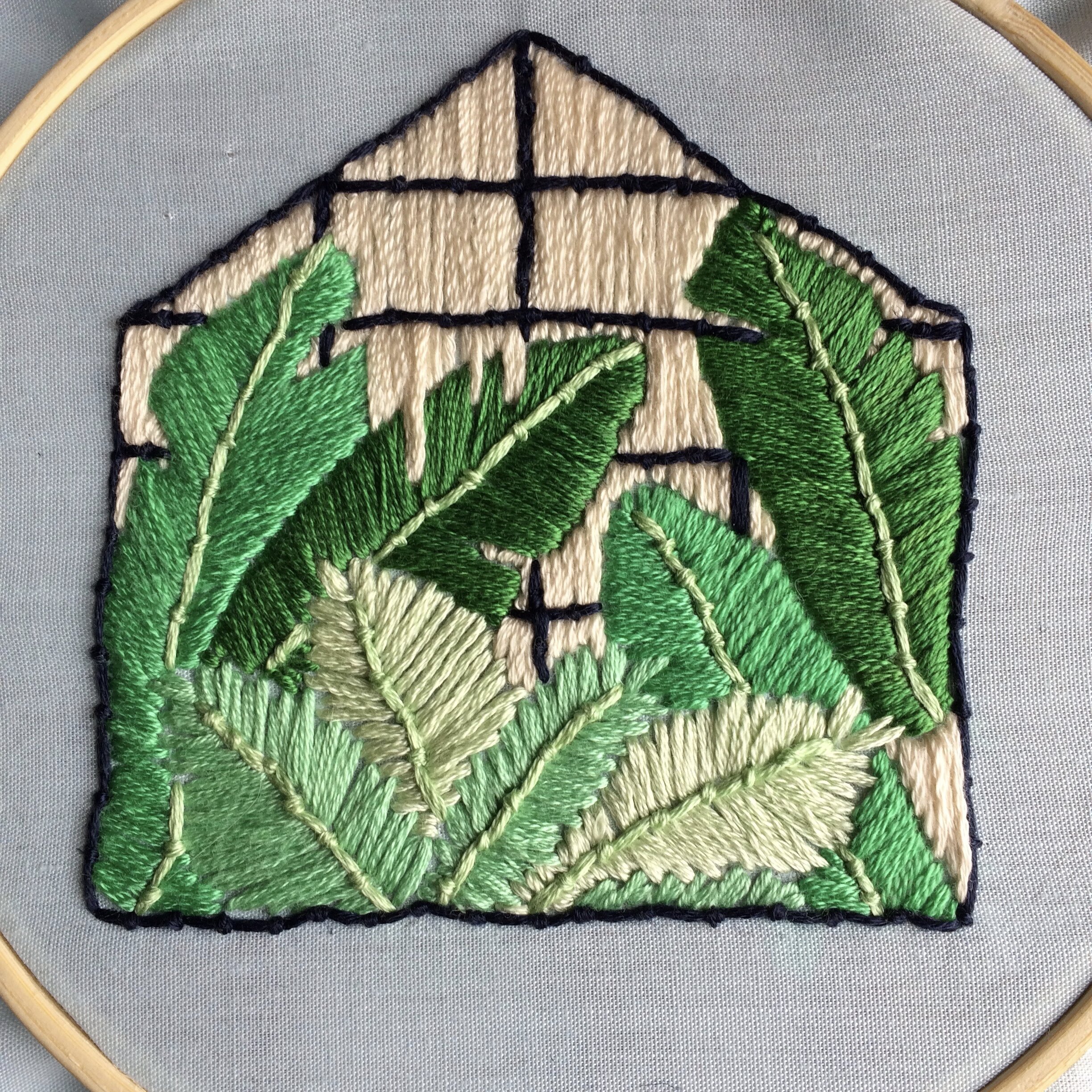My short answer is ‘it depends’. Traditionally satin stitch is used to fill an area with long flat stitches and doesn’t have any outline.
But it can be tricky to get a smooth edge to the filled area of satin stitch whatever your level of embroidery skill or experience. This is because of the way the pattern is placed on the thin warp and weft threads of the fabric. Generally when you create an embroidery stitch the needle pokes through the fabric in the little hole between the warp and weft threads. However, if your transferred pattern means that the ideal placement for the end of the stitch isn’t in one of these gaps it can be tricky to get the stitch in the exact place you need it to be. As a result you may get small patches of the edge of satin stitch that aren’t in the smooth line you were hoping for.
Stitching very short satin stitches can be particularly difficult to stitch as well, often resulting in an uneven edge (see the stems of the fuchsias below!)
Using an outline stitch covers up some of this unevenness to give a smooth looking finish. You can see below two fuchsia flowers, one with no outline and one outlined using a single strand of floss and split stitch. Which of the two do you prefer?
I often also use outline stitches when I’ve got blocks of filled colour next to each other. The filling stitch helps the eye to separate these blocks. I also love using a slightly different shade to help with this definition. The rose you can see at the top of this page is stitched with a slightly darker shade of peach for the outline, that looks great at a distance and close up.
Any line stitch can be used to outline filled in areas. My personal preference is split stitch as you don’t get any gaps between each of the stitches which you sometimes get with backstitch. Couching is another way of outlining but the thread is couched down with tiny stitches which can sometimes distract the eye.
This is one of the very first pieces I embroidered and the outlines and stems are outlined with couching. (It also shows how you shouldn’t give up if you’re stitches aren’t perfect when you first start.)
I always decide whether to add an outline after I’ve completed the satin stitch. But there are some embroiderers who add the outline first and then fill in. I’ve tried this method but I find it tricky to get the satin stitches under rather than through the outline. I’d suggest you have a go and determine which method works best for you.
Enjoyed this blog post? I share embroidery tips and a free embroidery pattern in my monthly newsletter. Sign up here to receive the newsletter on the 1st of each the month.



